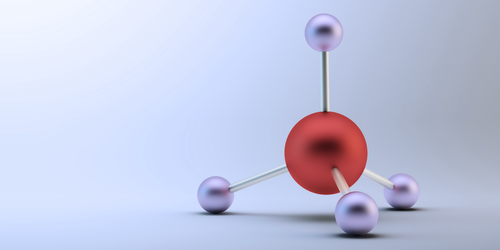Hydrogen Heavyweight Found for Methane-Hydrogen Compounds
In the outer Solar System, methane- and hydrogen-based compounds are the most common small molecules aside from water, so their interaction in extreme conditions is interesting to scientists. Signatures of methane-hydrogen compounds have appeared in geoscience and materials science studies. But, despite the ubiquity of these substances, they have been experimentally ignored for decades. Now, Ross Howie from the University of Edinburgh, UK, and his colleagues have explored the properties of a variety of methane-hydrogen molecules, finding previously unobserved hydrogen-rich forms of these compounds [1]. The discovery could help in better understanding the evolution and interior dynamics of Neptune, Uranus, Earth, and other planets where methane-hydrogen compounds are found.
To form their methane-hydrogen compounds, Howie and colleagues used a diamond anvil cell—a device that compresses materials to extreme pressures. Trapping about a nanoliter of methane-hydrogen gas between two diamond tips, the team squeezed it down until it formed a solid compound with a diameter of roughly that of a human hair. In x-ray diffraction and optical spectroscopy experiments, the team determined the structure of the resulting high-pressure compounds.
Above pressures of 5 GPa, the team observed the formation of methane-hydrogen compounds rich in hydrogen. One of those compounds, , which is made up of 3 methane molecules and 25 hydrogen molecules, contained 51% hydrogen by weight, the most hydrogen of any known substance.
The team says that they have begun investigating the temperature effects of , along with the other compounds that they made. One of their goals is to find out whether they can reduce the pressure at which their hydrogen-rich methane-hydrogen compounds form by adjusting the temperature at which they conduct experiments. If the compounds can form at low pressures, they have the potential for use in hydrogen storage.
–Allison Gasparini
Allison Gasparini is a freelance science writer based in Santa Cruz, CA.
References
- U. Ranieri et al., “Formation and stability of dense methane-hydrogen compounds,” Phys. Rev. Lett. 128, 215702 (2022).




